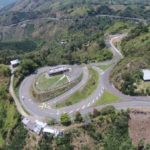Times have changed on the oil market, which has seen one of its lowest levels. Shale oil producers are a new force on the market. Discourse about the oil industry is often gloomy and its future is seen as unsecure, most likely because we think in the old fashioned, simplistic economic terms.
Reality in one of the most representative energy markets, the Gulf countries, shows that concerned are misplaced. Despite OPEC restrictions on production and the apparent quarrel with Qatar, the Gulf countries are cleverly considering diversification strategies to ensure them consistent revenues.
Gulf oil companies are contemplating a diversification of their portfolio to enhance value. Aramco is looking to list 5 % of its stock on an international exchange. Kuwait Petroleum Corporation is considering selling some shares in its subsidiaries. Or it may very well buy.
In January 2014, Petrochemical Industries Co., a subsidiary of state-owned Kuwait Petroleum Corporation, entered into a preliminary cooperation agreement with Oil & Natural Gas Corp. (ONGC) from India, which owns the biggest stake in OPaL India, but the negotiations stopped in 2016. An investment of $1 billion is being planned by Oman Oil Company and its subsidiaries for various projects, including Salalah LPG project, an ammonia project (expansion of Salalah Methanol unit), Duqm gas pipeline, Sohar-Wadi Al Jissi gas pipeline, a mega crude storage facility at Ras Al Markaz (near Duqm) and several other projects in Duqm free zone.
One intricate and innovative master plan has been designed by ADNOC, the 12th largest oil producer in the world, with 3.1 million barrels a day, operating along the entire hydrocarbon chain, from exploration, production storage, refining and distribution, to a full range of petrochemical products. ADNOC shows a high level of resilience and it turns out to be very resourceful in designing new elaborate schemes and partnerships, and new ways to boost its turnover.
In doing so, ADNOC may set an example in innovative asset management. Economic schemes such as reduction of bad debt risk and vertical integration materialize in mergers, award of shares, splitting of concessions, optimization of the capital structure, and attraction of new partners with finance, markets and new skills. It also turns out to be an example of pragmatism and open-mindedness. It treats international oil companies as peers and competitors at the same time, and any possibility is taken into account. International oil companies, traders, private equity investors and global infrastructure specialists, key customers such as China, Japan and South Korea, financial institutions and pension funds are all possible players along the multiple chains of its business.

